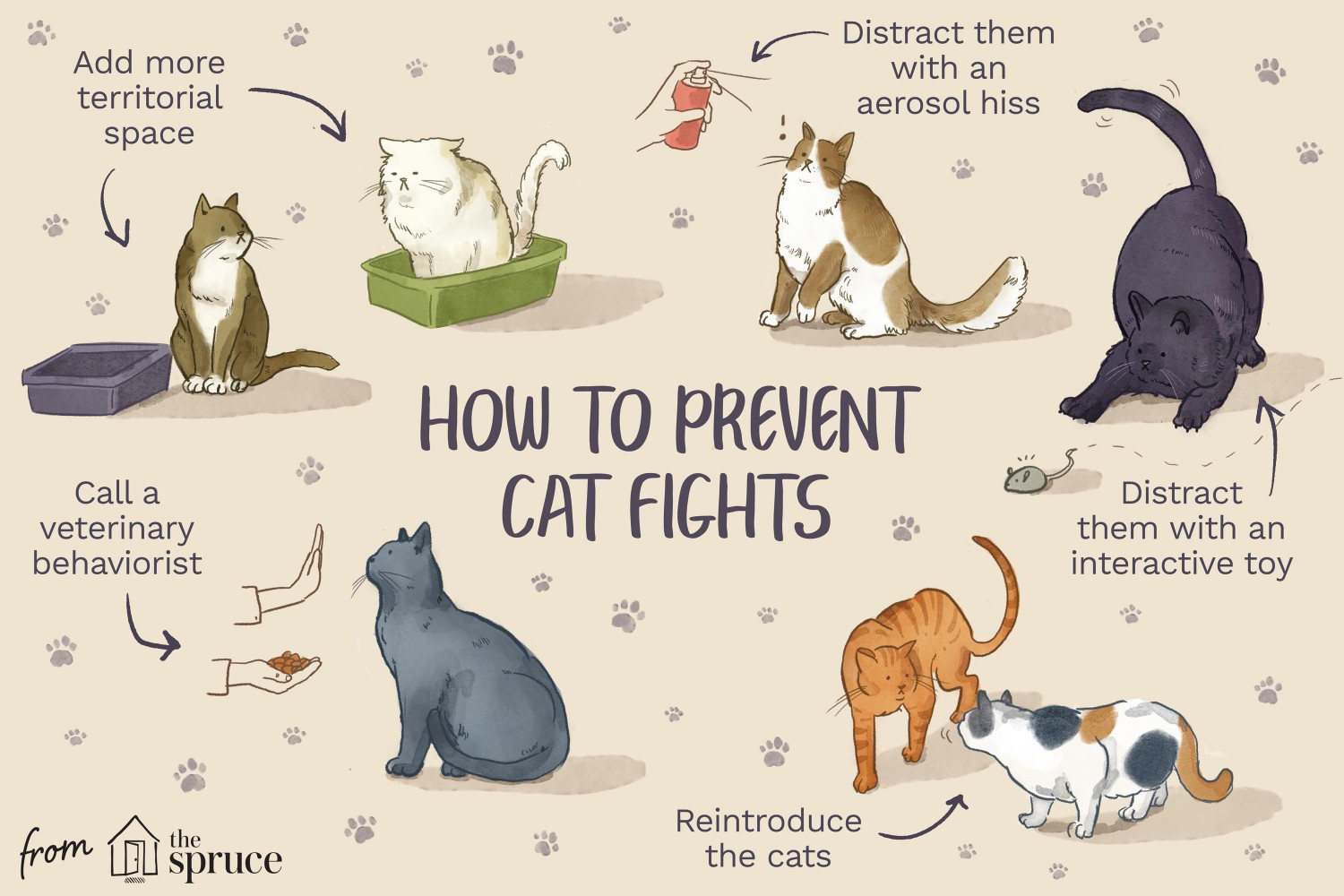
How to Stop Your Cat From Eating Dirt
Cats are well known for their weird, lovable antics, and eating dirt is definitely one of...
If you have more than one cat living under your roof, you may be familiar with catfights. But how do you know if it's play aggression between cats, when to worry, and what to do about the fighting? When cats are fighting frequently, it can be frustrating for pet owners and potentially dangerous to cats, sometimes even drawing blood. It's not a good idea to allow cats to "fight it out" because this rarely settles conflicts and usually makes matters worse. Learn the types of behaviors and how to stop aggression between cats so your household can stay at peace.
Cats usually display social standing with posturing and "bluffing" communication that typically do not result in injuries. If they get along, they can usually learn to tolerate or avoid each other as well. However, this likely won't always be the case and fights may break out for any number of reasons:
Cats use vocal and silent communication to elevate their status in the eyes of the other felines. They challenge each other with stares, forward-facing body position, hisses, growls, mounting behavior, nape bites, or blocking access to food, play, or attention. Some dominant cats use "power grooming" behavior and aggressively lick another cat to make it move away.

Illustration: The Spruce / Marina Li
Not all expressions of aggression are the same when it comes to cats. There are many types of aggression in the feline world, and it can help you achieve more patience if you understand the possible reasons behind the attacks. Here are the types of aggression that cats can experience:
If your home is the site of frequent catfights, it's important that you do your best to stop it; not only for your cats' health but also for your own well-being. This is not an overnight process—behavioral conditioning can take months. Stick with it, but also realize that some cats may never get along. Here are steps to take to curb the catfighting:
When all tactics have failed to stop two indoor cats from fighting, one cat may need to be placed in a new home or permanently segregated from the other. Don't consider it giving up; it's making life better for your cats and ensuring that they are happy no matter where they live.
If you're witnessing a catfight breaking out, there are steps to take to deescalate the brawl. Resist the temptation to break it up physically yourself. You'll only end up bloody and scratched and potentially lose the trust of one (or both) of your cats. Take these steps to break them up:
You can help your cats tolerate each other with another tactic that gets back to the basics. Treat the fighting cats as though they are being introduced for the very first time. Give the passive cat the choice of locations within the house, sequester the bully cat, and then make a controlled introduction. Expose the cats to each other with cat carriers or a harness and leash used in a hallway or large room. During these meetings, feed cats tasty foods or engage in play so they learn to associate each other with fun, positive rewards.

Cats are well known for their weird, lovable antics, and eating dirt is definitely one of...

Cats aren't usually as noisy as dogs, but that doesn't mean they don't vocalize. Cats wil...

Some cats are a lot like puppies and enjoy chewing on objects. Plastic items are some of ...

Cat language—including cat talk and non-verbal messages—is sometimes puzzling. Cats h...

Cats' aluminum-foil aversion tempts some pet owners to cover their countertops in the shi...

The health benefits of blueberries are abundant. Blueberries contains vitamins, antioxida...

Pet parents may consider home cooking for their pets for many different reasons. This ma...

Spaying and neutering cats has become a vital and commonly performed procedure. It is vit...

Essential oils, aromatherapy, and potpourri in your home may be pleasant f...
Comments on "Play vs. Aggression Between Cats: What's the Difference?" :